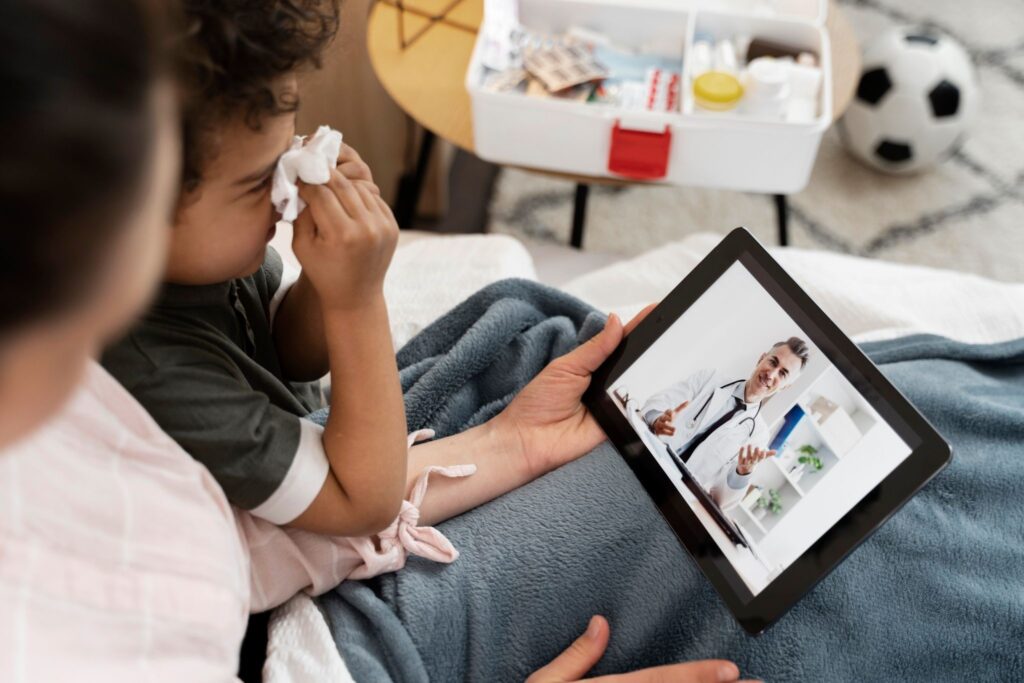Remote patient monitoring (RPM) is a creative approach to healthcare that combines technology and data-driven insights. It helps providers monitor their patient’s health regardless of geography. RPM has many benefits such as it allows healthcare providers to engage with their patients in a new manner by providing them with improved, comprehensive care tailored to their needs.
With RPM solutions, healthcare practitioners can monitor patients constantly and respond quickly and accurately to any changes in their health. It permits healthcare providers to detect signs of deterioration of a patient’s situation before more serious issues arise, which helps reduce hospitalizations and costly medical treatments.
RPM services also increase patient satisfaction by providing more convenient, secure access to healthcare providers through telehealth visits or real-time health tracking. Further, RPM helps to reduce healthcare costs overall by encouraging early detection and intervention of patient health issues. Integration of telehealth and RPM greatly impacts patient health outcomes.
Why Is Remote Patient Monitoring Important?
The significance of remote patient monitoring should be emphasized, especially when it comes to chronic diseases. Nearly 45 percent or 133 million American, suffer from at least one chronic condition. A rough record shows that thirty million patients will use remote monitoring solutions by 2024 to address symptoms and follow-up care. Regular and consistent treatment is one of the best cures for chronic conditions.
RPM Increases Patient Engagement
Remote patient monitoring (RPM) improves the patient experience. It is a successful process to increase the patient’s interest in their health by giving them easy access to health data.
This enables them to track their progress and get instant feedback from their healthcare providers. Patients also get the self-awareness and motivation to maintain their health. Moreover, RPM automatically sends reminders and notifications to patients encouraging them to achieve health goals.
Solve Trouble Adhering to Care Plans
Most Americans have a problem sticking to their care plans. Over half of all American patients do not take their medicine as specified, and one out of five prescriptions are never filled.
Each year, 125,000 people die from medication non-adherence. Medication non-adherence accounts for 33-69% of medication-related hospital admissions, with the industry incurring direct and indirect costs of $300 billion annually due to poor medication adherence. RPM solutions solve this rising issue by providing easy access to perceptions on their devices and sending reminders to track their health and take medicine.
A Remote Patient Management Program: 4 Steps to Engage Patients
Even though RPM is a powerful tool for pleasing patients in their health, they must first be curious about the program. To succeed in RPM, patients must be involved and willing to manage their health.
When engaging patients with a brand-new RPM program, telehealth experts suggest four key considerations:
- Provide answers to patients’ questions and concerns about the technology, timetable, and clinical oversight.
- Adapt the program to the individual needs and lifestyles of each patient.
- Make sure the technology is suitable for each patient.
- Engage family members and caretakers in ways that support the patient.
Boost Patient Engagement with CCM and RCM
The combination of chronic care Management (CCM) and remote patient monitoring (RPM) plays a critical role in patient monitoring systems and raising patient engagement. Chronic care management (CCM) helps recognize and manage chronic diseases, while RPM regularly monitors patients’ health status.
The combination can be used to monitor the progress of a patient’s health over time and to provide aggressive care. With CCM, practitioners can use data from the patient’s medical history, laboratory tests, and other health details to develop a personalized care plan.
RPM can track patient health vitals such as blood pressure, heart rate, and other vital signs. This data can detect changes in a patient’s health and immediately provide the required care. It can also assist in identifying potential health risks and allows for early treatment interventions before chronic conditions worsen.
How to Improve a Patient’s RPM Experience
Patient Permission is Required
Patients have much broader expectations. Patient permission is required before a remote patient monitoring program can be executed. After they approve of participation, consider consulting or repeating the importance of being fully engaged and active participants in their care. As the program does not cover emergency services, patients should seek emergency care if their condition becomes dangerous.
Define the Real Prospective of RPM
Your patients will be more likely to have a successful and clinically meaningful experience if you provide them with a clear definition of remote patient monitoring. What should they expect during their participation in the program? What should they expect afterward (if applicable)? Communication between the care team and the patient should be active and regular.
Patient Should Have the Know-how of Technology
Finally, make sure patients know how to contact their care managers. Patients should be able to ask care managers questions about remote patient monitoring (RPM) devices and specific health conditions. It is planned to provide patients with a proper, direct relation to the care team by eliminating the phone tag process that occurs when calling a practitioner’s office.
Conclusion
This guide discussed how healthcare facilities could improve patient engagement by integrating the RPM program into their practice. Moreover, offering remote patient monitoring services will help practices become more profitable.
Remote patient monitoring can significantly impact patient engagement and healthcare adherence for medical practices without increasing operational and overhead costs.
You may also like
-
Effortless Pigmentation Mark Removal: Exploring the Benefits of Yellow Laser Treatment
-
Pelvic Mesh Implants: What You Should Know About Potential Side Effects
-
How to Recover From a Foot Injury
-
Finding Balance: 7 Stores Offering the Best Traditional Chinese Medicine for Stress Relief
-
Sildisoft 100 and Valentine’s: Crafting Moments of Love

